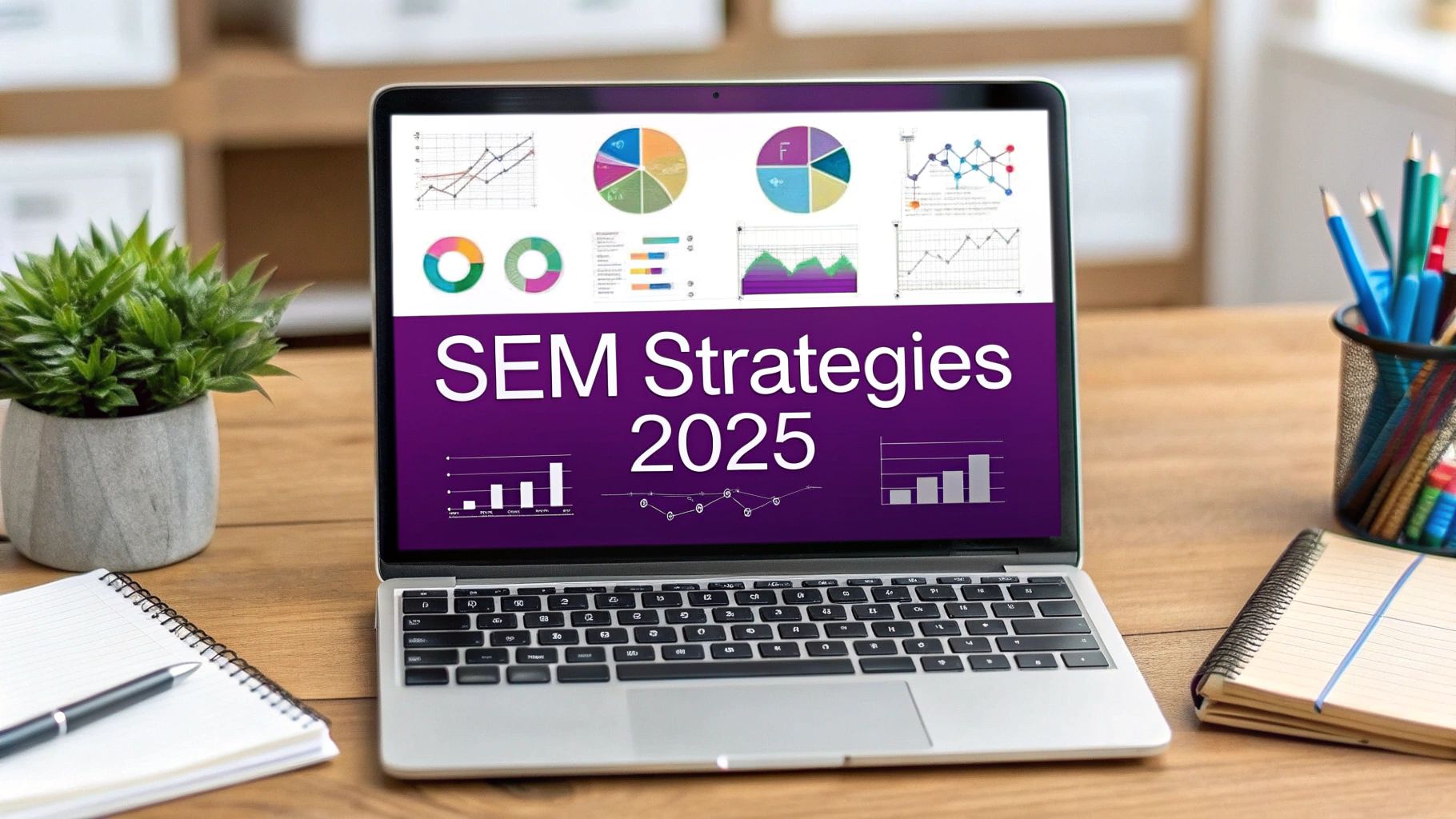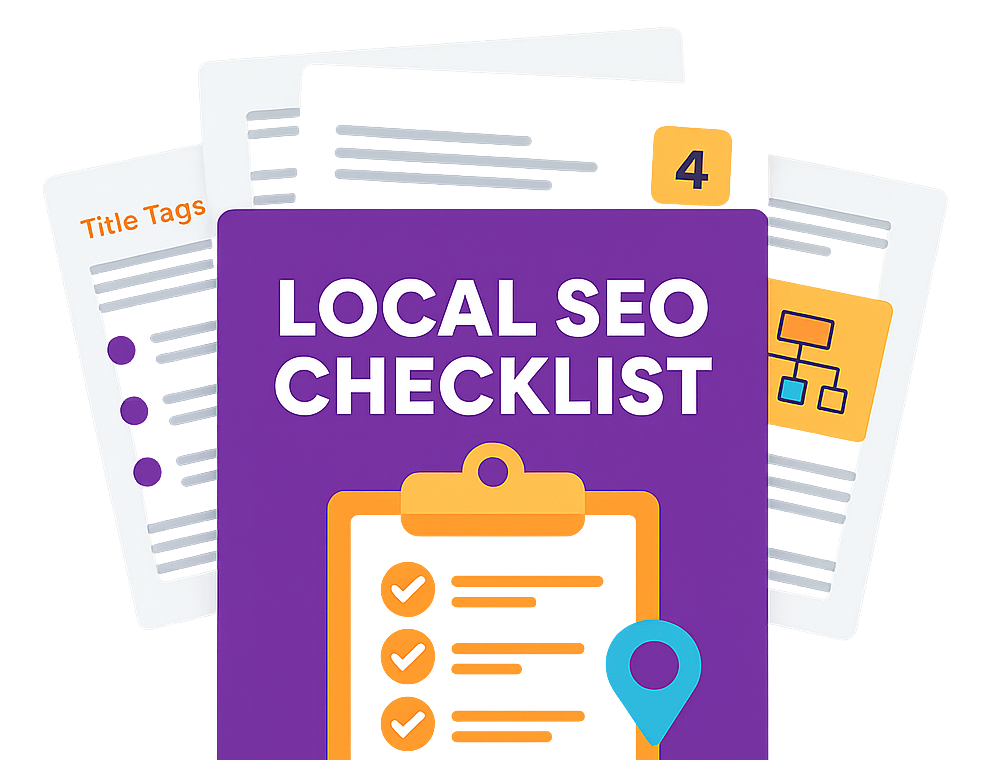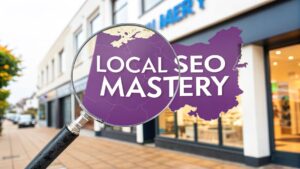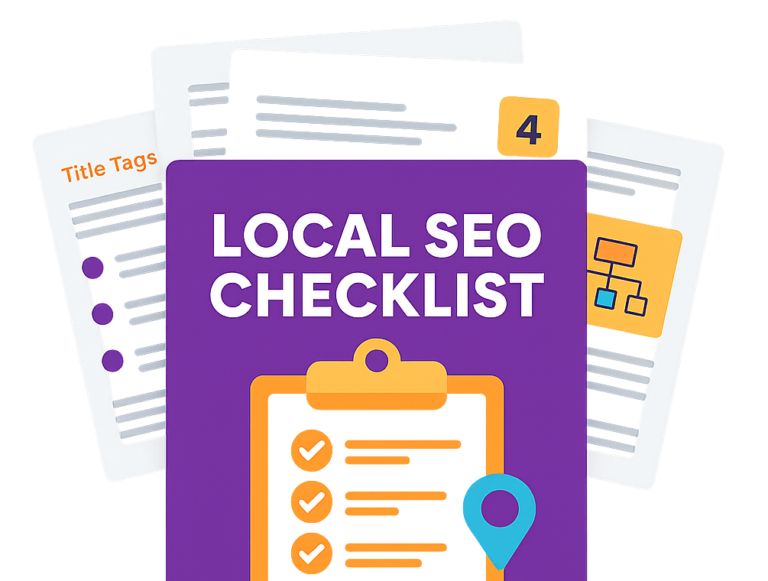In today's competitive online marketplace, a strong digital presence is non-negotiable for growth. To connect with your target audience and drive meaningful results, a comprehensive plan built on effective search engine marketing strategies is essential. This guide is designed to provide small and medium-sized enterprises (SMEs) across the UK with a clear, actionable roadmap to enhancing online visibility and maximising their return on investment.
We will break down ten foundational strategies, from generating immediate leads with Pay-Per-Click (PPC) advertising to building sustainable, long-term authority through Search Engine Optimisation (SEO). You will learn how to master local search to attract nearby customers in areas like Cambridgeshire, re-engage interested visitors with remarketing, and optimise your landing pages to convert traffic effectively.
Each section offers practical implementation details and specific examples, avoiding vague advice. Whether you are an e-commerce business aiming for more sales or a local service provider seeking qualified enquiries, these proven techniques provide the framework for a successful digital marketing campaign. We will delve into keyword research, competitive analysis, shopping ads, and the critical role of analytics, helping you turn search engine clicks into loyal, paying customers.
1. Pay-Per-Click (PPC) Advertising
Pay-Per-Click (PPC) advertising is a core component of many successful search engine marketing strategies, offering a direct way to gain visibility on search engine results pages (SERPs). Unlike organic methods, PPC allows you to purchase visits to your site. You bid on specific keywords relevant to your business, and your ads appear when users search for those terms. You only pay a fee when someone actually clicks your ad, making it a highly measurable and controllable marketing channel.

This model, primarily driven by platforms like Google Ads and Microsoft Advertising, is perfect for businesses seeking immediate impact. A local plumbing service in Cambridgeshire, for instance, can use PPC to appear at the very top of search results for "emergency plumber near me," generating leads instantly rather than waiting months for SEO to take effect. It provides an unparalleled level of control over budget, targeting, and messaging.
Actionable PPC Tips for SMEs
To maximise your return on investment, a strategic approach is essential.
- Target Long-Tail Keywords: Start with highly specific, longer phrases (e.g., "eco-friendly web hosting for start-ups") to attract qualified traffic at a lower cost-per-click.
- Utilise Negative Keywords: Actively build a list of negative keywords (terms you don’t want to trigger your ads) to prevent wasted ad spend on irrelevant searches.
- Implement Conversion Tracking: From day one, set up conversion tracking to measure which ads and keywords are driving valuable actions, such as form submissions or sales.
- Test Landing Pages: Continuously test variations of your landing pages (A/B testing) to improve conversion rates and lower your cost per acquisition.
2. Search Engine Optimisation (SEO)
Search Engine Optimisation (SEO) is the long-term practice of enhancing your website to rank higher in organic, non-paid search engine results. Unlike PPC, SEO focuses on earning visibility through relevance and authority. It is a foundational element of sustainable search engine marketing strategies, involving technical site improvements, on-page content optimisation, and off-page authority building through backlinks. The goal is to signal to search engines like Google that your content is the most valuable and relevant answer to a user's query.

This organic approach builds trust and credibility over time, driving consistent traffic without a direct cost per click. For example, an e-commerce business in Cambridgeshire selling handmade leather goods can use SEO to rank for "buy handmade leather wallet UK," attracting highly qualified customers for months or even years from a single piece of well-optimised content. While the results are not immediate, the return on investment can be substantial, making it a vital strategy for long-term growth.
Actionable SEO Tips for SMEs
To build a strong organic presence, focus on a user-centric approach.
- Focus on User Intent: Move beyond simple keywords and create content that comprehensively answers the underlying questions and needs of your target audience.
- Prioritise Mobile-First Indexing: Ensure your website offers a flawless experience on mobile devices, as Google primarily uses the mobile version for ranking.
- Monitor Core Web Vitals: Regularly check your site’s loading speed, interactivity, and visual stability (LCP, FID, CLS) to meet Google's technical performance standards.
- Build Relationships for Links: Instead of just asking for backlinks, focus on creating valuable content and building genuine relationships with others in your industry to earn links naturally.
3. Local Search Marketing
Local Search Marketing is a vital subset of search engine marketing strategies designed to make your business more visible in location-specific search results. This practice focuses on optimising your online presence to attract customers from your geographical area. It combines traditional SEO techniques with local business optimisations, such as managing your Google Business Profile and building local citations, to ensure you appear prominently in map listings and for "near me" searches.

This approach is indispensable for businesses with a physical location or a defined service area. For example, a café in Cambridgeshire can use local search marketing to appear when a potential customer searches for "best coffee near Cambridge station." This strategy drives direct foot traffic and phone calls by connecting your business with users who have a high intent to purchase locally. It leverages proximity and relevance to give SMEs a competitive edge in their home territory.
Actionable Local Search Tips for SMEs
To dominate your local market, a focused and consistent approach is key.
- Claim and Optimise Listings: Ensure your business is accurately listed on key directories like Google Business Profile, Bing Places, and Yelp. Keep your name, address, and phone number (NAP) consistent everywhere.
- Encourage and Manage Reviews: Actively ask satisfied customers for reviews and make a point to respond to all feedback, both positive and negative, to build trust and social proof.
- Create Location-Specific Content: Develop pages or blog posts tailored to your service area (e.g., "Garden Landscaping Services in Ely"). Learn more about local SEO with this Cambridgeshire guide.
- Leverage Google Business Profile Posts: Regularly share updates, offers, and news through Google Business Profile posts to keep your listing active and engaging for potential customers.
4. Remarketing and Retargeting
Remarketing is one of the most powerful search engine marketing strategies for re-engaging users who have already shown an interest in your business. It involves using tracking pixels and cookies to serve targeted ads to people who have previously visited your website or app. This allows you to stay top-of-mind and guide potential customers back to complete a desired action, such as a purchase or enquiry.

This tactic is incredibly effective because it targets a warm audience. For instance, a Cambridgeshire-based e-commerce shop can use remarketing to show ads for a specific product to users who added it to their cart but didn't check out. By reminding them of their interest across platforms like the Google Display Network or Facebook, you significantly increase the likelihood of conversion, achieving a higher return on ad spend than with cold traffic.
Actionable Retargeting Tips for SMEs
To get the most from your remarketing campaigns, precision is key.
- Segment Your Audiences: Create separate lists based on user behaviour, such as "cart abandoners," "viewed specific product page," or "visited pricing page," to deliver highly relevant ads.
- Use Frequency Capping: Set a limit on how many times a user sees your ad within a certain period to avoid ad fatigue and potential annoyance.
- Exclude Recent Converters: Ensure you aren't wasting your budget by showing ads to customers who have already completed a purchase. Exclude them from your campaigns for a set duration.
- Create Compelling Ad Creatives: Design ads that directly address the user's previous action. An ad for an abandoned cart could include a small discount or highlight free shipping to entice them back.
5. Keyword Research and Optimisation
Keyword research and optimisation is the foundational process of any successful search engine marketing strategy, guiding both SEO and PPC efforts. It involves identifying and analysing the specific terms and phrases that potential customers use when searching for products, services, or information. By understanding search volume, competition, and, most importantly, user intent, businesses can tailor their content and ad campaigns to meet audience needs precisely.
This strategic approach ensures your marketing budget is spent attracting relevant visitors. For example, a local bakery in Cambridgeshire would benefit more from targeting "vegan birthday cakes in Cambridge" than the broad term "cakes". The former signals clear purchase intent and attracts highly qualified local traffic. Effective keyword optimisation is about connecting your solutions directly with the problems your customers are trying to solve.
Actionable Keyword Tips for SMEs
To build a powerful foundation for your marketing, focus on a detailed and user-centric approach.
- Prioritise Search Intent: Focus on the why behind a search. Is the user looking to buy, learn, or find a specific location? Align your content with this intent over chasing high-volume vanity keywords.
- Utilise Topic Clusters: Organise your content into topic clusters. Create a central "pillar" page for a broad topic (e.g., "digital marketing") and link out to more detailed "cluster" articles (e.g., "PPC for beginners"), establishing topical authority.
- Analyse Competitor Gaps: Use tools to see which keywords your competitors are ranking for but you aren't. This can reveal valuable opportunities to capture market share by creating superior content for those terms.
- Embrace Voice Search Queries: Optimise for natural, conversational phrases and questions (e.g., "how do I find a good plumber near me?"). These longer queries are becoming increasingly common with the rise of smart speakers. For a deeper dive, learn more about leveraging AI for SEO keyword research.
6. Shopping Ads and Product Listing Ads (PLAs)
For e-commerce businesses, Shopping Ads, often known as Product Listing Ads (PLAs), are a non-negotiable part of modern search engine marketing strategies. These visual ads appear at the top of search results, showcasing product images, prices, and your brand name directly on the SERP. They capture user attention immediately for product-related searches, making them a powerful tool for driving high-intent traffic directly to product pages.
This ad format, powered by platforms like Google Shopping and Microsoft Shopping, is essential for any retailer. A small online boutique in Cambridgeshire selling handmade jewellery, for instance, can use PLAs to instantly compete with larger retailers for searches like "silver heart necklace UK." By presenting the product visually, these ads often achieve higher click-through rates than standard text ads, driving qualified buyers ready to make a purchase.
Actionable PLA Tips for SMEs
To maximise visibility and sales, a meticulous setup is crucial.
- Optimise Product Titles: Your product titles are your primary keywords. Structure them with key attributes like brand, colour, and size (e.g., "Brand X Men's Leather Wallet – Black") to match user searches.
- Use High-Quality Images: Your product image is the first thing users see. Use clear, professional, and appealing photos on a clean background to stand out from competitors.
- Keep Pricing Competitive: Regularly monitor competitor pricing and ensure your product feed is always up-to-date. Price is a major decision-making factor in the shopping results carousel.
- Implement Negative Keywords: Just like in standard search campaigns, add negative keywords at the campaign or ad group level to prevent your products from showing for irrelevant searches and wasting your budget.
7. Landing Page Optimisation
Landing Page Optimisation is a critical discipline within search engine marketing strategies that focuses on creating dedicated, conversion-focused pages. Driving traffic to your website via SEO or PPC is only half the battle; the landing page must persuade that visitor to take a specific action. This strategy ensures a seamless transition from ad or search result to a page designed with a single, clear objective, drastically improving your campaign’s return on investment.
This approach is vital for maximising the value of every click. For example, an e-commerce business in Cambridgeshire advertising "handmade leather bags" should direct users to a page showcasing only those products, not their generic homepage. Platforms like Unbounce and HubSpot have popularised creating streamlined pages that align perfectly with user intent, removing distractions and guiding the visitor towards a single conversion goal, such as a purchase or a sign-up.
Actionable Landing Page Optimisation Tips for SMEs
To turn more visitors into customers, focus on creating a frictionless user experience.
- Match Your Message: Ensure your landing page headline and primary message directly reflect the ad copy or link text the visitor clicked. This consistency reassures users they are in the right place.
- Remove Distractions: Eliminate the main website navigation menu and any unnecessary links from your landing page. The goal is to keep the user focused on the single call-to-action.
- Use Social Proof: Build trust by including customer testimonials, reviews, ratings, or logos of well-known clients. This validates your offering and reduces hesitation.
- Optimise Your Forms: Keep lead capture forms as short as possible. Only ask for essential information to reduce friction and increase completion rates.
- Test One Element at a Time: Use A/B testing to compare variations of a single element, such as a headline, button colour, or image, to gain clear insights into what improves performance. For a deeper dive, explore our guide on e-commerce conversion rate optimisation.
8. Voice Search Optimisation
Voice search optimisation is the practice of adapting your search marketing strategies for queries spoken into devices like smart speakers (Amazon Alexa, Google Home) and smartphone assistants (Siri, Google Assistant). As this technology becomes more integrated into daily life, optimising for conversational queries is no longer optional; it’s a crucial part of a comprehensive SEM plan. Users ask questions naturally, and your content needs to provide direct, concise answers to be selected by these devices.
This strategy is vital for capturing on-the-go and hands-free searchers. For example, a driver in Cambridgeshire might ask, “Where is the best coffee shop near me with parking?” To capture this query, a local café needs content that directly answers this conversational question. Success in voice search often means earning a "position zero" featured snippet, as voice assistants typically read out this single top result, making it a high-stakes component of modern search engine marketing strategies.
Actionable Voice Search Tips for SMEs
To capture this growing market, focus on answering your audience's questions directly.
- Target Question-Based Keywords: Use tools to find long-tail keywords phrased as questions (e.g., "how do I fix a leaking tap?").
- Create FAQ Pages: Develop dedicated FAQ pages that provide clear, concise answers to common customer queries, making it easy for search engines to pull information.
- Optimise for "Near Me" Searches: Ensure your Google Business Profile is fully updated with your address, hours, and phone number to capture local voice searches.
- Focus on Featured Snippets: Structure content with clear headings and lists to increase your chances of being chosen as the featured snippet answer for a query.
9. Competitive Analysis and Intelligence
Understanding your competition is a cornerstone of effective search engine marketing strategies. Competitive analysis involves systematically researching your rivals' search marketing efforts, from the keywords they target to their ad copy and landing page designs. This intelligence allows you to uncover their strengths and weaknesses, identify strategic opportunities, and avoid making the same mistakes, ultimately giving your business a significant competitive advantage.
This proactive approach helps you benchmark your performance and set realistic goals. For example, an e-commerce brand in Cambridgeshire can use tools like SEMrush or Ahrefs to see which keywords are driving the most traffic for a larger national competitor. By identifying "striking distance" keywords where the competitor is weak, the smaller business can focus its SEO and PPC efforts to capture valuable market share, rather than competing head-on where the rival is strongest.
Actionable Competitive Intelligence Tips for SMEs
To turn competitor data into a strategic asset, focus on actionable insights.
- Identify Content Gaps: Analyse your competitors' blogs and resource centres to find relevant topics they haven't covered. Creating high-quality content to fill these gaps can attract an underserved audience.
- Monitor Ad Copy Patterns: Regularly review your competitors' PPC ads. Are they testing new offers, headlines, or calls-to-action? This reveals their current positioning and can inspire your own ad copy tests.
- Track SERP Feature Presence: See which competitors are winning featured snippets, image packs, or local packs for key terms. Reverse-engineer their success to optimise your own content for these valuable SERP features.
- Focus on Successful Strategies: Don’t just copy everything a competitor does. Use intelligence tools to identify which of their pages, keywords, or ads are performing best and learn from their proven successes.
10. Attribution Modelling and Analytics
Attribution modelling is one of the more advanced search engine marketing strategies, focusing on understanding which channels and touchpoints contribute most effectively to conversions. Instead of giving all the credit to the final click before a sale, this analytical approach dissects the entire customer journey, assigning value to each interaction, from the initial organic search to the final retargeting ad. This provides a holistic view of how your marketing efforts work together.
This data-driven strategy is crucial for optimising budget allocation. For example, a SaaS company might discover that while paid search drives the final conversion, initial awareness is consistently generated by organic blog content. Without attribution modelling, they might incorrectly devalue their content marketing budget. By analysing the full path, they can make smarter investment decisions across their entire SEM portfolio.
Actionable Analytics Tips for SMEs
To effectively implement attribution, a clear focus on data integrity is vital.
- Implement Comprehensive Tracking: Ensure your analytics platform is correctly configured from day one to capture data from all marketing channels, including paid search, organic, social media, and email.
- Compare Different Models: Don’t rely on a single model like "Last Click." Compare it with "First Click," "Linear," and "Time Decay" models to gain different perspectives on channel performance.
- Focus on Business Impact: Move beyond vanity metrics like clicks and impressions. Measure what truly matters: cost per acquisition (CPA), return on ad spend (ROAS), and customer lifetime value (LTV). You can learn more about Google Analytics alternatives that help with this.
- Regularly Audit Your Setup: Schedule quarterly audits of your tracking codes and conversion goals to ensure data accuracy. A broken tag can render your attribution analysis useless.
Search Engine Marketing Strategies Comparison
| Item | Implementation Complexity | Resource Requirements | Expected Outcomes | Ideal Use Cases | Key Advantages |
|---|---|---|---|---|---|
| Pay-Per-Click (PPC) Advertising | Medium – requires ongoing campaign management and optimisation | Moderate – budget for bidding, tools, and management | Immediate traffic and visibility | Businesses needing fast visibility, product launches, competitive markets | Instant traffic, precise targeting, measurable ROI |
| Search Engine Optimisation (SEO) | High – technical expertise and continuous effort needed | Moderate to high – content creation, technical audits | Long-term organic traffic growth | Long-term growth, brand building, sustainable traffic | Sustainable traffic, cost-effective, builds trust |
| Local Search Marketing | Medium – requires local listings management and citations | Low to moderate – local SEO tools, review management | Higher local conversion rates | Bricks-and-mortar businesses, physical location services | Targeted local audience, cost-effective, higher conversions |
| Remarketing and Retargeting | Medium – setup of tracking pixels and audience segmentation | Moderate – ad platforms, creative, audience data | Higher conversion rates from warm audiences | E-commerce, SaaS, brands with longer sales cycles | Personalised ads, improved conversions, cost-effective |
| Keyword Research and Optimisation | Low to medium – research tools and analysis required | Low to moderate – keyword tools subscription | Improved targeting and content relevance | Content creators, SEO specialists, PPC managers | Data-driven targeting, better content relevance |
| Shopping Ads and PLAs | Medium – product feed and inventory management | Moderate to high – product feed maintenance, platform use | Qualified visual traffic with price-aware buyers | E-commerce retailers, product-focused businesses | High-intent traffic, prominent SERP placement |
| Landing Page Optimisation | Medium to high – design, testing, and development needed | Moderate – design resources, testing tools | Increased conversion rates and ROI | PPC advertisers, lead generation, e-commerce | Higher conversions, improved user experience |
| Voice Search Optimisation | Medium – content and technical adjustments for voice queries | Low to moderate – content creation, technical SEO | Capture emerging voice search traffic | Local businesses, brands with conversational queries | Early mover advantage, enhanced engagement |
| Competitive Analysis and Intelligence | Medium – requires multiple tools and research time | Moderate – subscriptions to intelligence tools | Strategic insights and market positioning | Competitive markets, new entrants, strategic teams | Identifies opportunities, benchmarks competitors |
| Attribution Modelling and Analytics | High – complex tracking and analytics implementation | High – analytics platforms, expertise, integrations | Better budget allocation and ROI measurement | Multi-channel marketers, enterprises, data-driven orgs | Data-driven insights, optimised spend |
Bringing It All Together for a Winning SEM Approach
Navigating the world of search engine marketing can feel like assembling a complex puzzle. We have explored ten distinct but interconnected pieces, from the immediate, quantifiable impact of Pay-Per-Click advertising to the foundational, long-term value of Search Engine Optimisation. Each strategy, whether it's hyper-targeting local customers or optimising your landing pages for conversion, represents a critical lever you can pull to drive growth.
The key takeaway is this: the most effective search engine marketing strategies are not deployed in isolation. A truly powerful approach is an integrated one, where each component supports and amplifies the others. Your meticulous keyword research fuels both your SEO content and your PPC campaigns. The data from your analytics and attribution models informs how you refine your landing pages and remarketing audiences. It is this synergy that transforms individual tactics into a cohesive, results-driven marketing engine.
Your Actionable Path Forward
To translate this knowledge into tangible results, your next steps should be deliberate and strategic. Don't try to implement everything at once. Instead, focus on building a sustainable framework for success.
- Audit Your Current Position: Start by evaluating where you stand. Use analytics to identify your top-performing pages, keywords, and traffic sources. A clear baseline is essential for measuring future success.
- Prioritise for Impact: Based on your audit, identify the low-hanging fruit. Is your local SEO neglected? Are your landing pages failing to convert traffic from high-performing ads? Focus your initial efforts where you can make the biggest impact with the resources you have.
- Embrace a Test-and-Learn Mentality: SEM is not a "set it and forget it" discipline. Continuously test new ad copy, experiment with different bidding strategies, and A/B test your landing page elements. The digital landscape is always evolving, and your strategy must be agile enough to adapt.
By systematically implementing and refining these search engine marketing strategies, you move beyond simply being present online. You begin to actively shape your digital footprint, driving qualified traffic, generating valuable leads, and ultimately, boosting your bottom line. Mastering this integrated approach is no longer a competitive advantage; it is a fundamental requirement for sustainable growth in today's crowded digital marketplace.
Ready to turn these strategies into a clear action plan? At Bare Digital, we specialise in creating transparent, results-focused SEM campaigns for businesses in Cambridgeshire and across the UK. Contact us today for a free SEO Health Check and discover how our tailored Activity Plans can drive measurable growth for your business.








